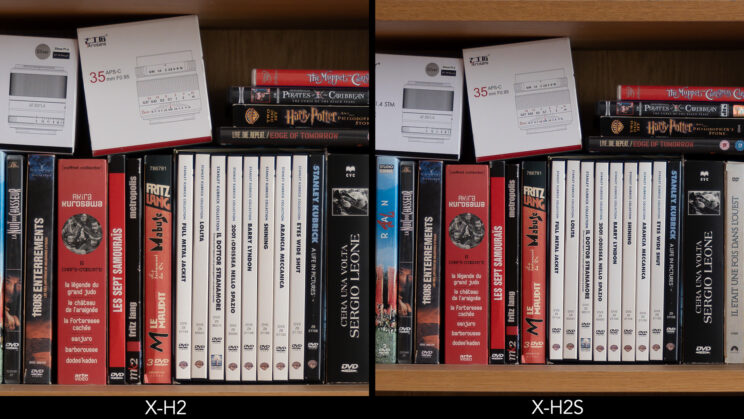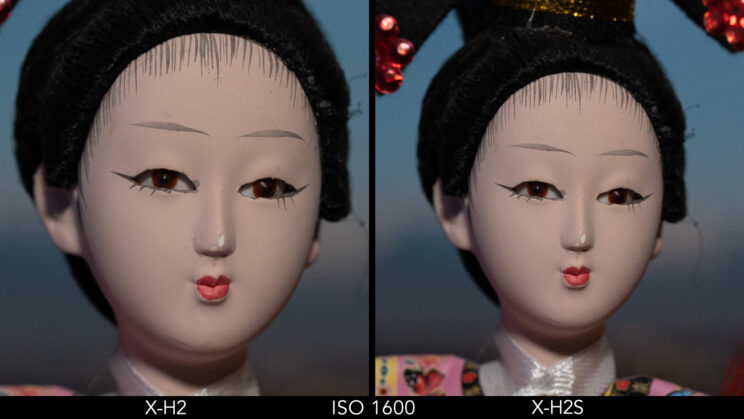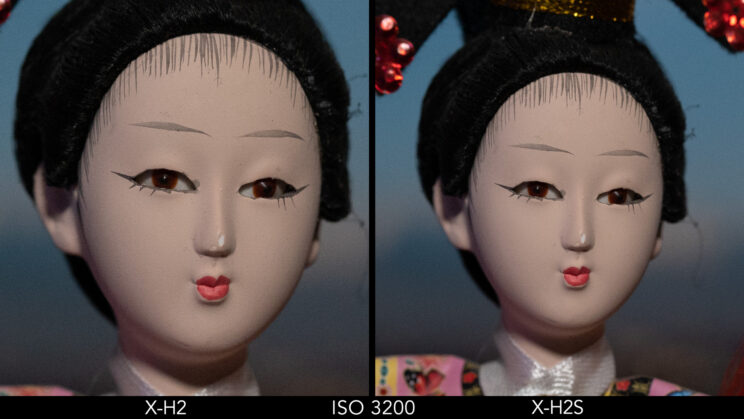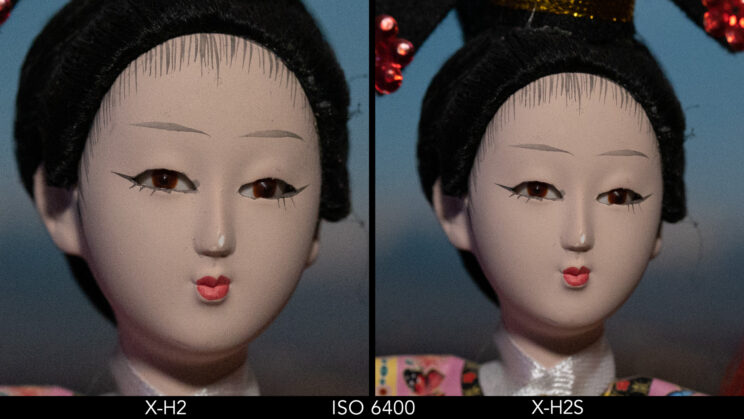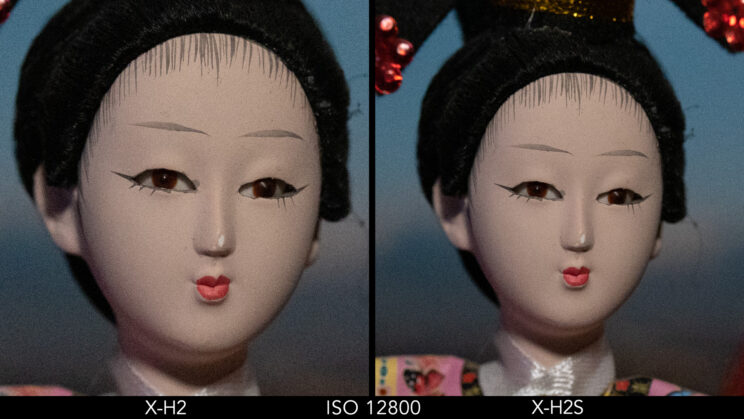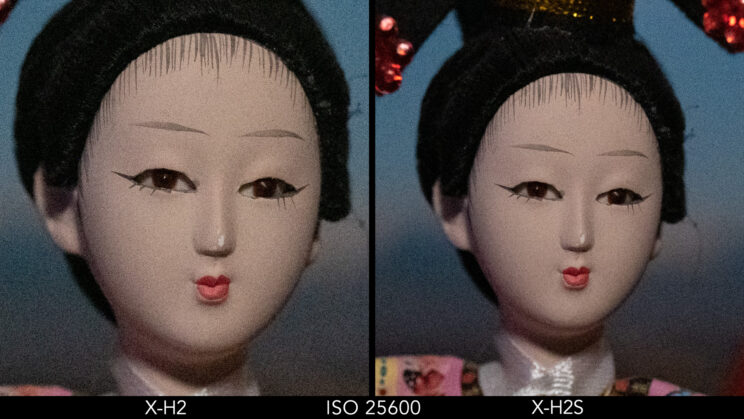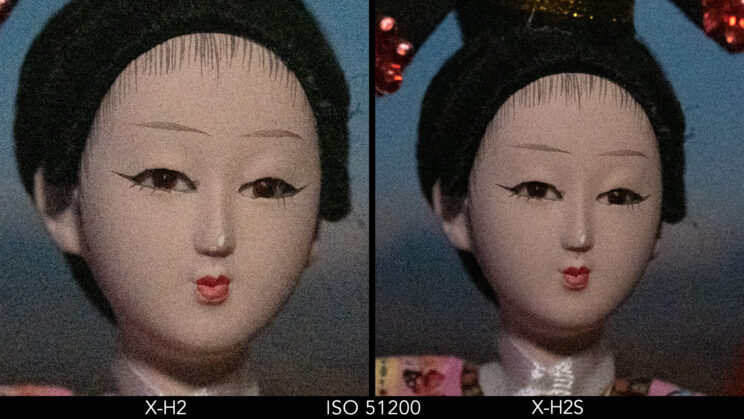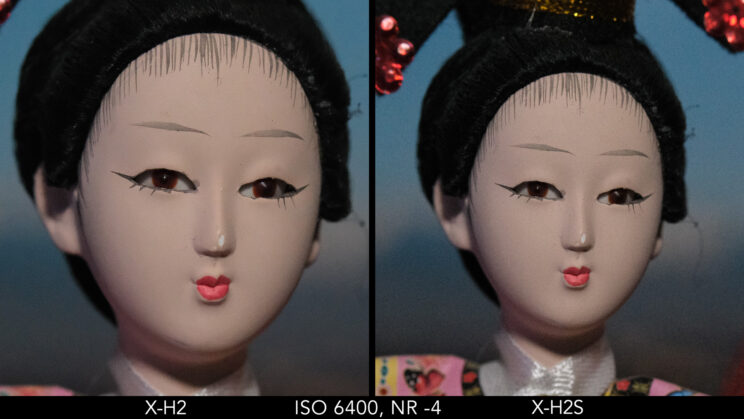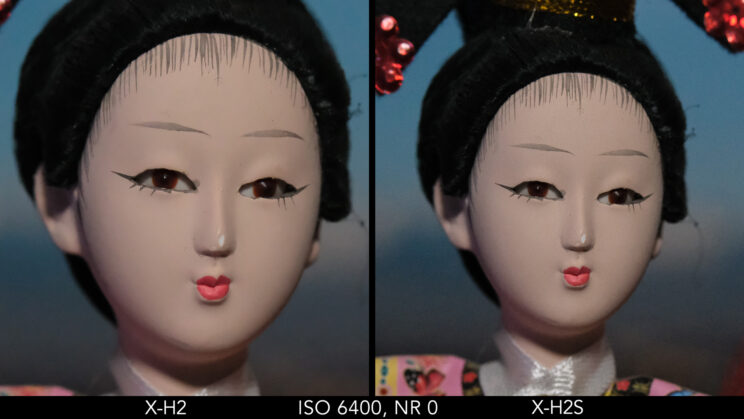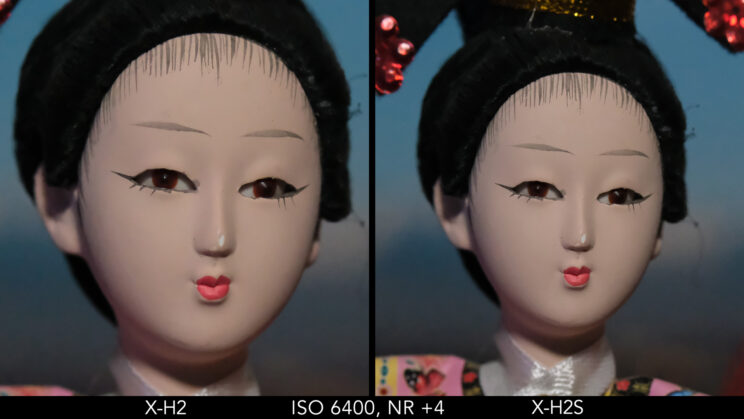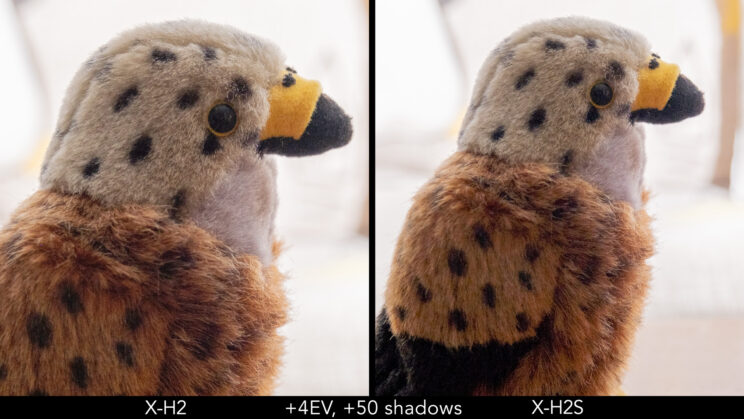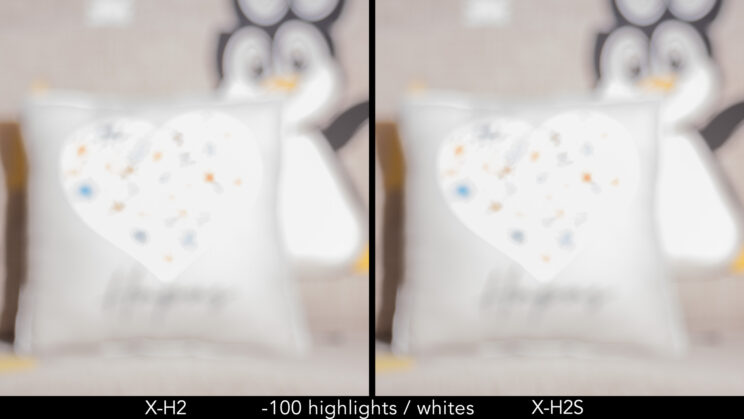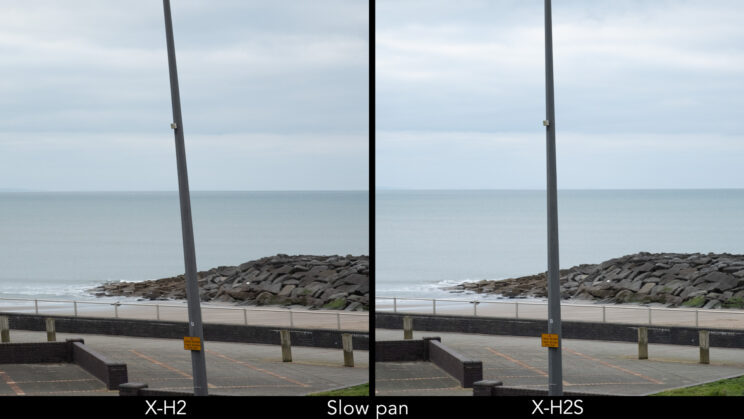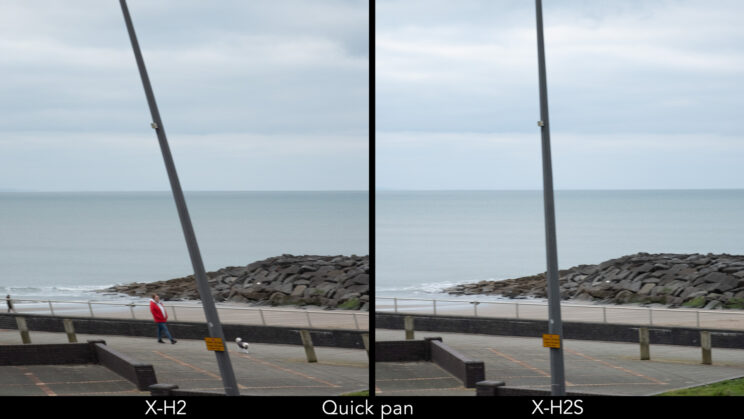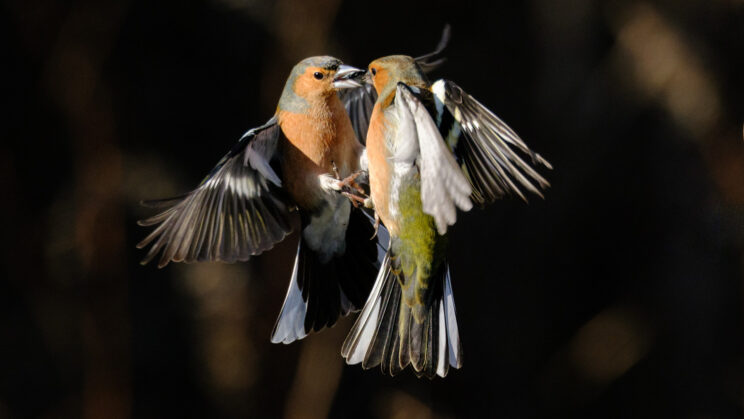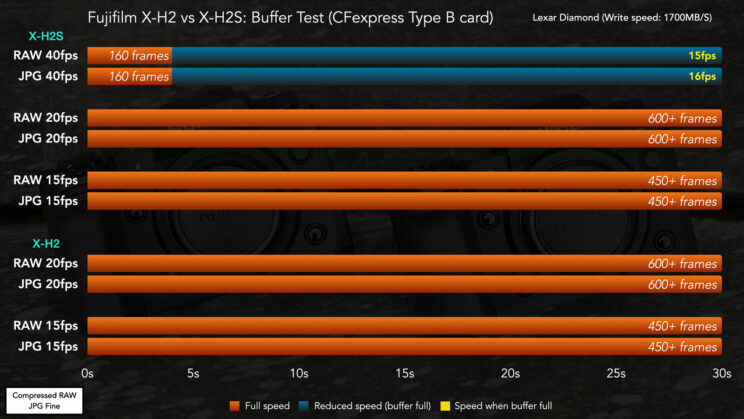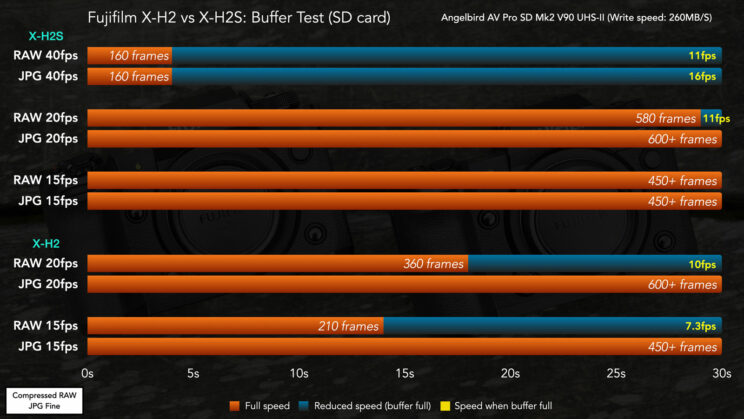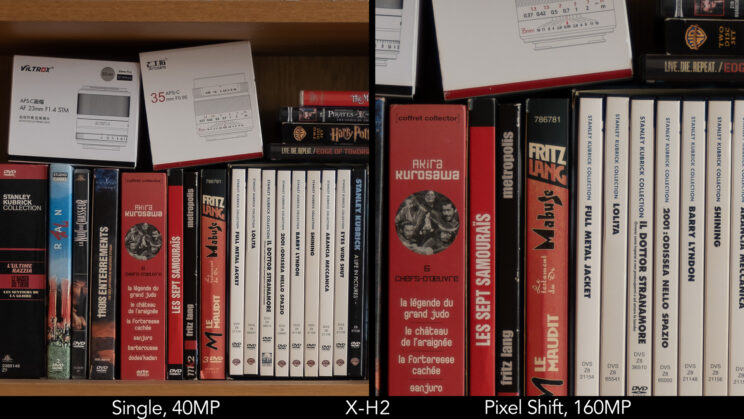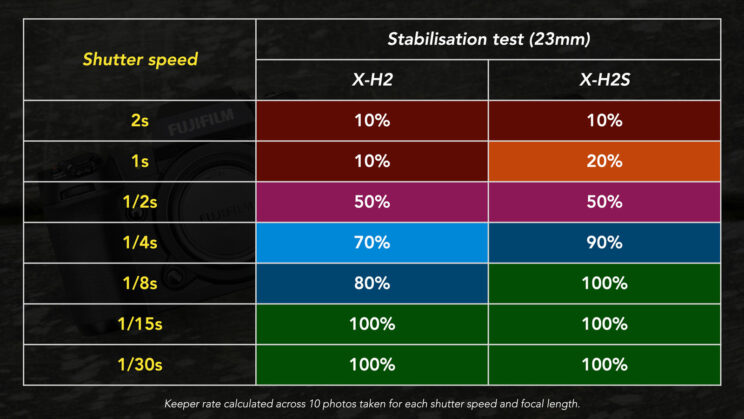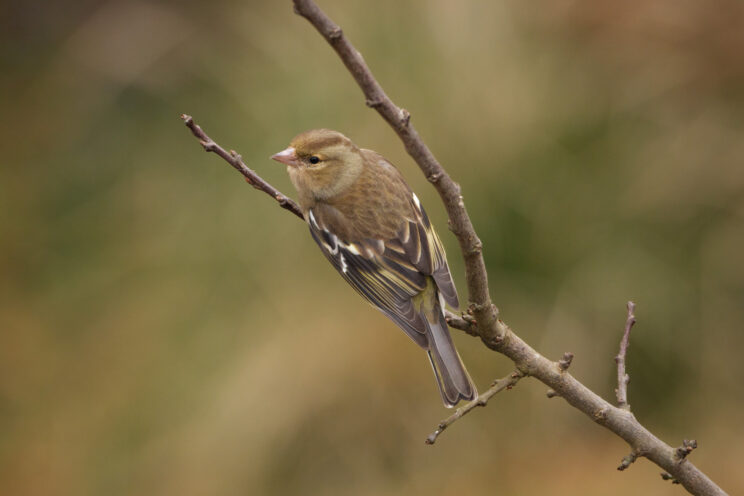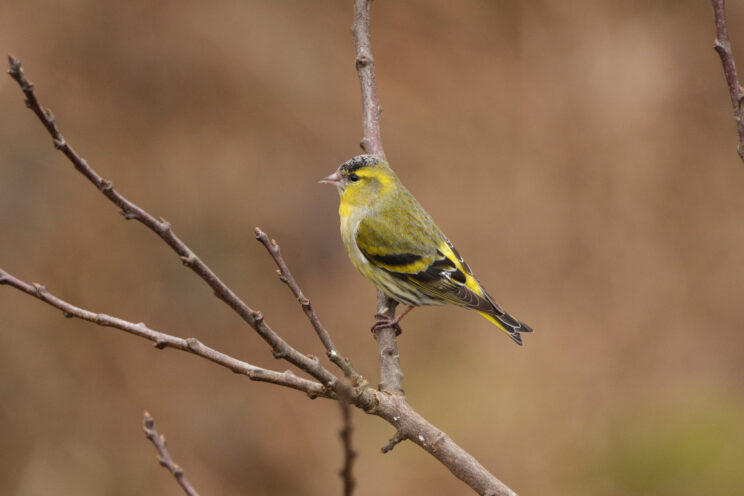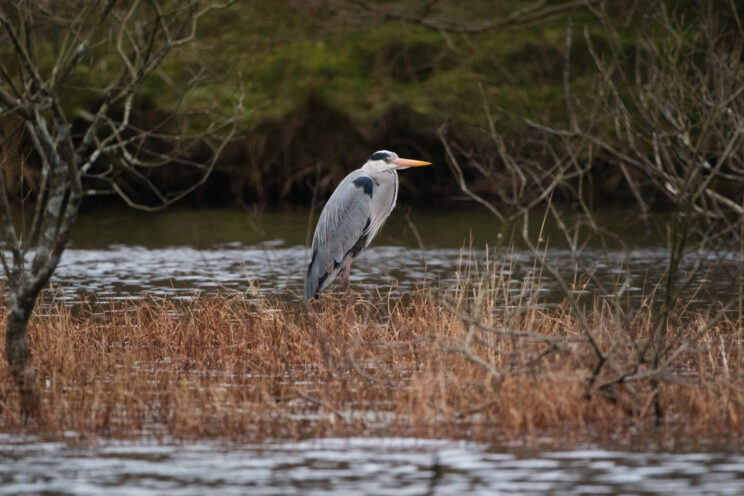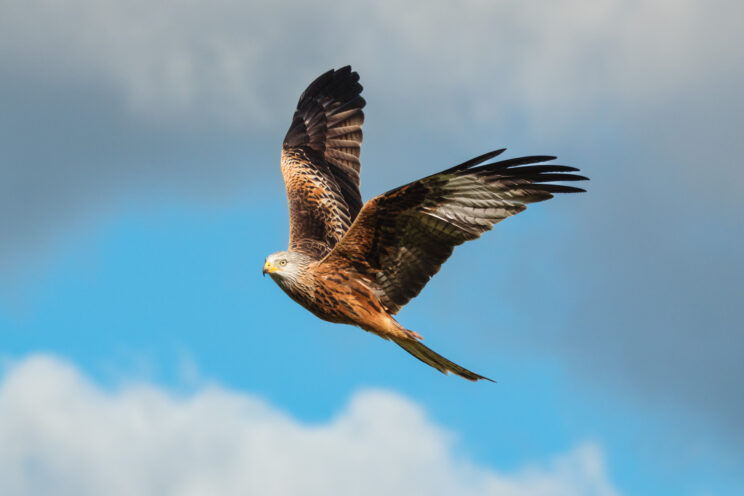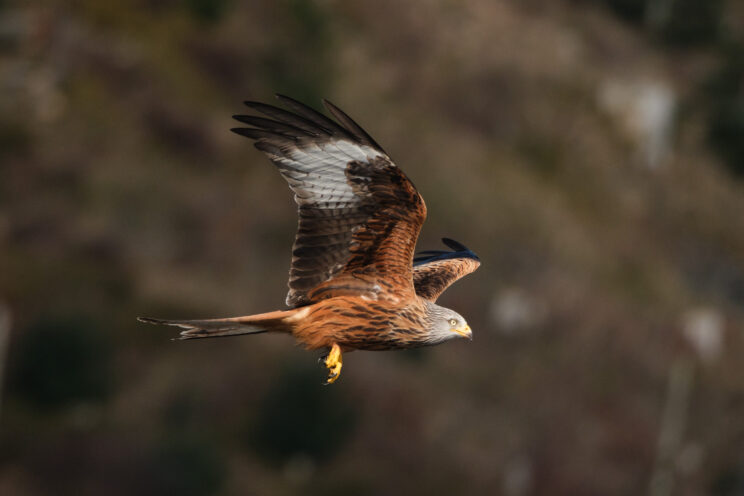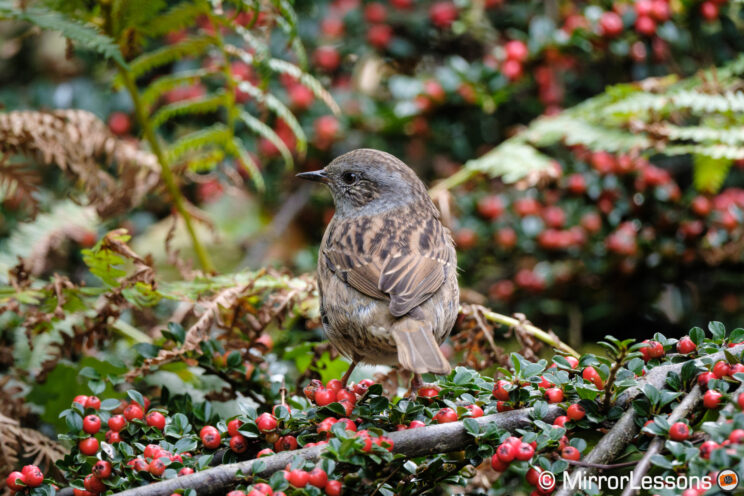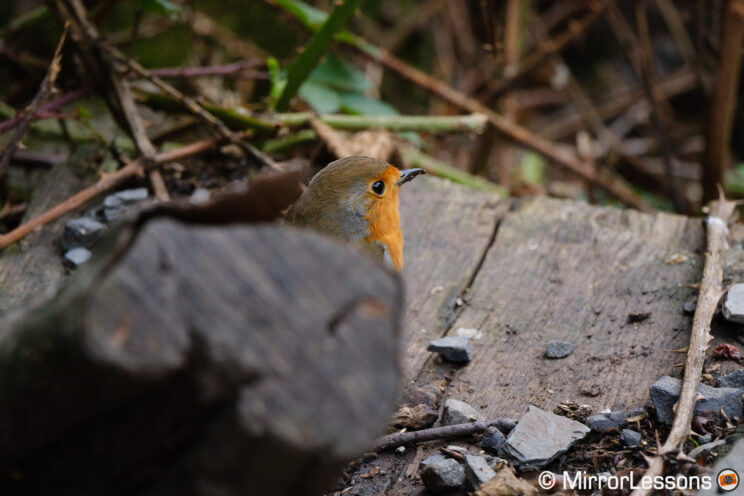The Fujifilm X-H2 is a camera that sets a new record with the highest resolution seen on a APS-C sensor (40MP), breaking the previous record from Canon with its 32MP sensor (90D and M6 II). But that’s not all the new Fujifilm model has to offer.
It can record 8K video with a great choice of codecs, including Apple Prores, inherits the latest autofocus system with intelligent subject detection, and much more.
The X-H2S is equally impressive, and actually the two cameras are identical on the outside, in addition to sharing many features and technology. So before we dive into the 5 main differences, here is a recap of the many things the two share.
What the X-H2 and X-H2S share in common:
- Body design with weather-sealing (136.3 x 92.9 x 84.6mm, 660g)
- OLED viewfinder with 5.76M dots, 0.8x magnification, 120fps, 24mm eyepoint
- Multi-angle LCD screen with 1.62M dots and touch control
- Hybrid AF system with 117/425 points, -7EV (F1.0), Subject Detection (animals, birds etc.)
- 5-axis in-body image stabilisation (up to 7 stops, depending on the lens)
- Microphone input, headphone output (3.5mm jack)
- Full size HDMI port
- 10Gbps USB-C
- NP-W235 battery with very similar rating
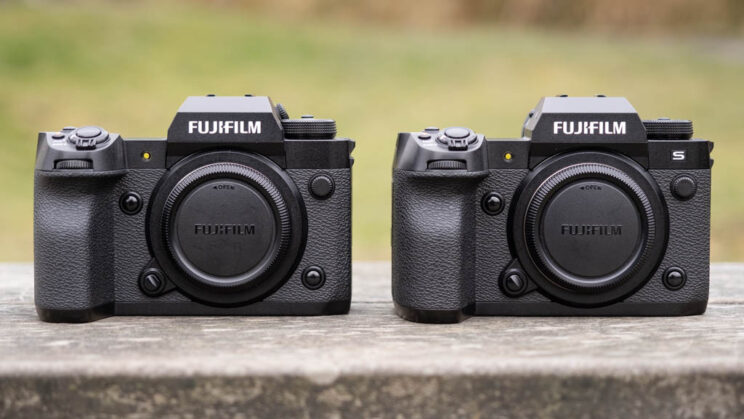
Ethics statement: the following is based on our personal experience with the two cameras. We were not asked to write anything about these products, nor were we provided any compensation of any kind. Within the article, there are affiliate links. If you buy something after clicking one of these links, we will receive a small commission. To know more about our ethics, you can visit our full disclosure page. Thank you!
TABLE OF CONTENTS
1. Sensor
2. Video
3. Speed
4. Pixel Shift Multi Shot
5. Price
– Video Review and Additional Feedback
– Product Images
– Conclusion
– Sample Images
1. Sensor
The two cameras feature the latest X-Processor 5 engine and an APS-C sensor, but the specifications of each are quite different.
First, the X-H2 has 40.2MP, whereas the X-H2S has 26.1MP.
Second, while both sensors have a BSI design (back-illuminated), that of the S model is also stacked and gives the camera more readout speed. (I explain the benefit of this in the third chapter below).
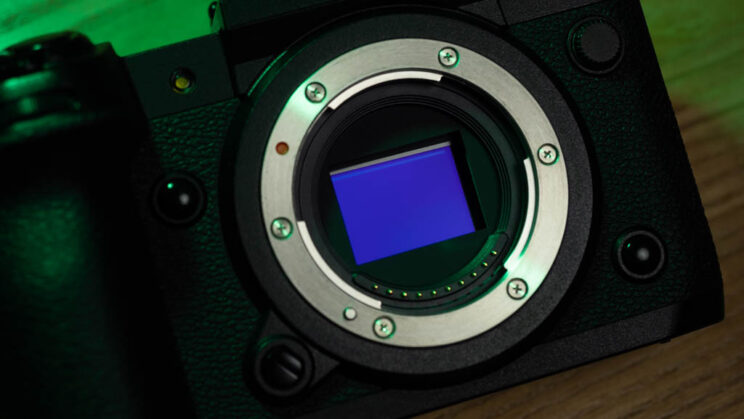
Both cameras can shoot RAW (uncompressed, lossless compressed and compressed) as well as JPG and 10-bit HEIF images. A Tiff option is available with the in-camera RAW conversion.
The two sensors are very capable of rendering sharp images (they both lack the anti-aliasing filter). That said, details appear larger with the X-H2 when the two images are magnified at 100%, and I find them a bit smoother and better defined.
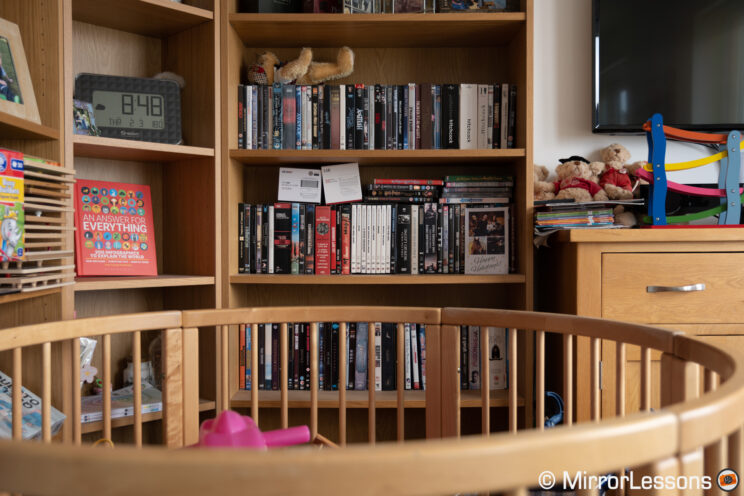
The ISO sensitivity remains very similar, with the only difference being the base level.
Camera
Normal range
Extended range
X-H2
125 – 12,800
64 – 51,200
X-H2S
160 – 12,800
80 – 51,200
Despite the higher megapixel count, the 40MP camera defends itself really well when it comes high ISO and noise performance. You start to notice a small difference from 3,200 ISO, but it is only at 12,800 that you can appreciate a more clean-looking image on the S model, and it’s not a striking difference either. The highest values, which are extended, deliver more noise on both cameras, and the X-H2S image is darker at 51,200 ISO.
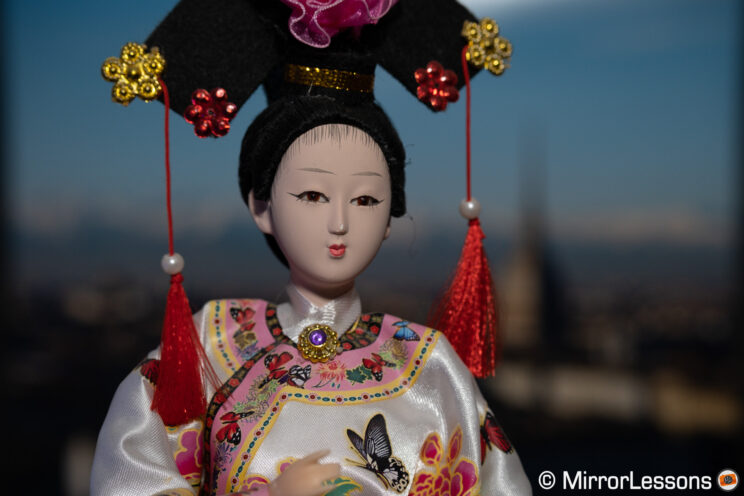
If we look at the straight out of camera JPGs, noise reduction is more aggressive on the X-H2. Here is an example with NR set to 0, where the X-H2S shows more luminance noise. Even if we set it to -4, you can see that the X-H2 image remains cleaner and smoother, whereas at +4, noise reduction feels a tad too invasive on the 40MP image.
Dynamic range is comparable. When opening the shadows on the RAW files, the X-H2S shows more noise and less details, but you need an extreme recovery to see a relevant difference.
Note: apologies for not showing you the usual scene for this test. The weather was very dramatic with the light changing every two seconds, so I had to find an alternative.
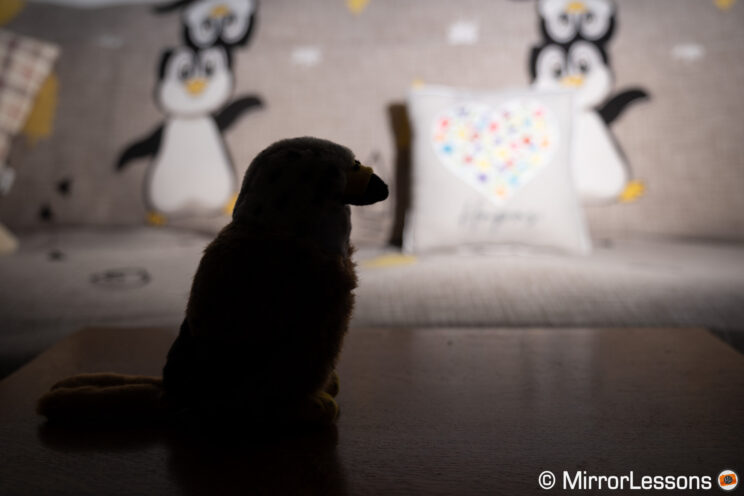
X-H2S: 1/6s, f/2.8, ISO 160
If we look at the highlights, they are both on the same level and can be recovered to the same degree.
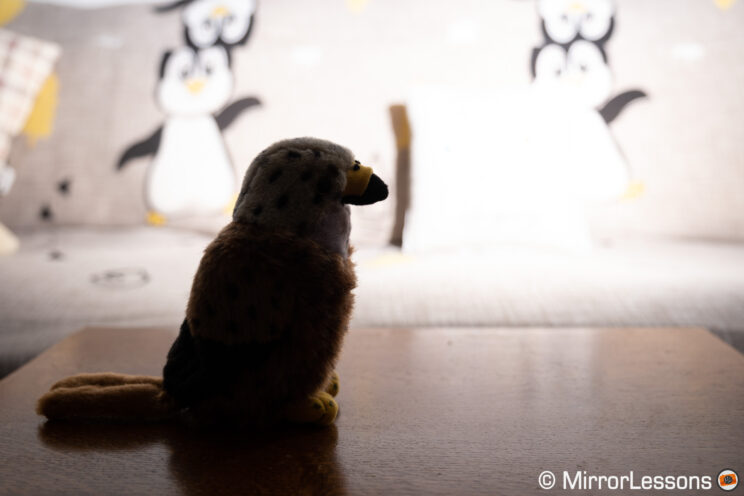
X-H2S: 0.6s, f/2.8, ISO 160
2. Video recording
The high resolution on the sensor allows the X-H2 to record 8K up to 30p. You can also select 6.2K video, up to 30p once again. In 4K, you can work up to 30p with oversampling from 8K, or up to 60p with sub-sampling. In Full HD, the frame rate goes up to 240p with the High Speed mode.
The X-H2S doesn’t reach 8K, but it’s no less capable by any means: it can record 6.2K 30p in the 3:2 aspect ratio (open gate), as well as 4K 120p (with a 1.29x sensor crop).
Both cameras offer lots of codecs, including H.265 and Apple Prores. You can record 10-bit 4:2:2 internally, or 12-bit RAW via HDMI and a compatible recorder (optional).
Neither camera has the 30min recording limitation, and if you want peace of mind about overheating, there is an optional cooling fan you can attach to the back of the camera.
Here are all the most important specifications.
VIDEO
X-H2
X-H2S
8K
30p
–
6.2K
30p
30p
4K
60p
120p
Full HD
240p
240p
Bit depth
10-bit 4:2:2
10-bit 4:2:2
Codec
Prores
H.265
H.264
Prores
H.265
H.264
Max. Bitrate
730M
730M
RAW
HDMI*
HDMI*
Profiles
F-Log
F-Log2
HLG
F-Log
F-Log2
HLG
*Note: To record RAW video via the HDMI port, you need an optional external recorder such as the Atomos Ninja V.
Concerning sharpness, when the two cameras are put side by side using the same lens and aperture, the X-H2S seems to deliver crisper details, but they also look a tad over-sharped, whereas the same details on the X-H2 are smoother, more refined and not too sharp. I used the standard setting for my test (Provia): you can tweak sharpness in the camera, or in post of course.
In 4K on the X-H2, the difference between HQ (aka High Quality, which means oversampling) and the normal 4K mode (sub-sampling) is significant. The normal 4K recording, the only one you’ll get if you want 50/60p, is less sharp and has more colour artefacts.
The ISO range is a bit different, mainly concerning the extended values which are one stop lower than in photo mode.
As for the noise performance, the X-H-2 has more noise: it’s already visible at ISO 800, and becomes progressively more apparent as you increase the value.
You can tweak the noise reduction setting and, actually, at -4 the X-H2 doesn’t look too bad, but the more you increase noise reduction, the softer the footage becomes, whereas the S model maintains a good level of details throughout.
As in photo mode, rolling shutter is much more contained on the X-H2S than the X-H2, as you can see below.
Both cameras can use the 5 axis stabilisation on the sensor to make your footage smoother when working hand-held. The results are pretty much the same. With static shots, it’s very good. When walking, both cameras struggle to deliver a smooth result, but it’s not terrible either.
There is a Digital IS mode that crops the sensor by 1.1x but delivers slightly better results, whereas IS Boost makes static footage steadier (don’t use it when panning however, you’ll end up with more jerkiness).
3. Speed
The X-H2 can take pictures up to 15fps when using the mechanical shutter, which is the same speed found on the X-H2S and the X-T4. But with the electronic shutter, things are different.
Thanks to its stacked sensor design, the X-H2S offers a superior drive speed, up to 40fps. Full AF and AE tracking is maintained, and there is no sensor crop or other limitations.
The X-H2 does a respectable 20fps, but only with a 1.29x crop on the sensor, which gives you a file of 24MP. If you want to use the entire surface of the sensor with the electronic shutter, the speed drops to 13fps.
The X-H2S can work with live view and no-blackouts, when working with the electronic shutter. Although this is no news, as many Fuji cameras share the same capability, it is nevertheless a nice feature that makes fast and erratic subjects easier to follow.
Another advantage of the S model is that the faster sensor readout reduces rolling shutter to a very small amount, as you can see below. Even when panning quickly, there is little distortion, whereas the X-H2 struggles more with this.
The electronic shutter offers other useful features such as the Pre-Shot mode, where the two cameras can save a number of frames in the buffer memory before the shutter button is fully pressed. Below you can see how many images can be taken before pressing the button all the way down. As always, this function is great to capture very fast action that is often difficult to anticipate.
One impressive specification, found only on the X-H2, is the possibility of using a shutter speed as fast as 1/180,000s (with the electronic shutter) thanks to what Fujifilm calls a special drive system. By comparison, the S model goes up to 1/32,000s.
Concerning the buffer, the X-H2 offers similar performance to the S model, which was a bit surprising to find out.
First of all, these are the results with the X-H2S when using a CFexpress card. It works at full speed for 4 seconds when using the quickest drive mode, then the frame rate is reduced considerably. With any other speed, it doesn’t slow down, no matter if you work with RAW or JPG.
Then we have the X-H2 results. Now at 20fps, it works in crop mode so with 24MP images. But at 15fps, it never slows down despite saving 40MP photos, so that is pretty good.
With a fast SD UHS-II card, the X-H2S performance remains more or less the same, whereas the X-H2 struggles a bit more with RAW. Still, it gives you full speed for at least 14 seconds, which is more than acceptable. In general, these two cameras do really well when it comes to the buffer.
4. Pixel Shift Multi Shot
For the first time on a Fuji X-series camera, you can composite multiple shots to create more resolution.
The X-H2 captures 20 images in a row, moving the sensor by half a pixel in between. With the Pixel Shift Combiner software, you can the composite these 20 images to create a DNG file with 160MP.
As always, this will work best with the camera on a tripod, and no movements inside your scene.
5. Price
The X-H2 is less expensive, with a retail price of $2000, £1880 or €2140.
The X-H2S can be found for $2500, £2400 or €2430.
Note that these prices are for the body only, as of March 2023.
Video Review and Additional Feedback
In my YouTube video below, you can hear more about the design and ergonomics, as well as the autofocus performance for bird photography.
I’ve tested the X-H2S with firmware 3.00, which is supposed to bring a substantial improvement. I definitely found the camera more reliable with static subjects, but the performance in my birds in flight was no better than what I found in October last year. The X-H2 is on the same level as the S model.
To all I’ve said above (text and video), I can add that the X-H2 and X-H2S gave me similar performance with the in-body image stabilisation. A photo taken hand-held at 1 second, or even two seconds, is possible, although the chances of getting a good shot with sharp details is low: you have to try multiple times. The performance improves significantly from 1/2s, and it’s a breeze at 1/8s.
Products Images
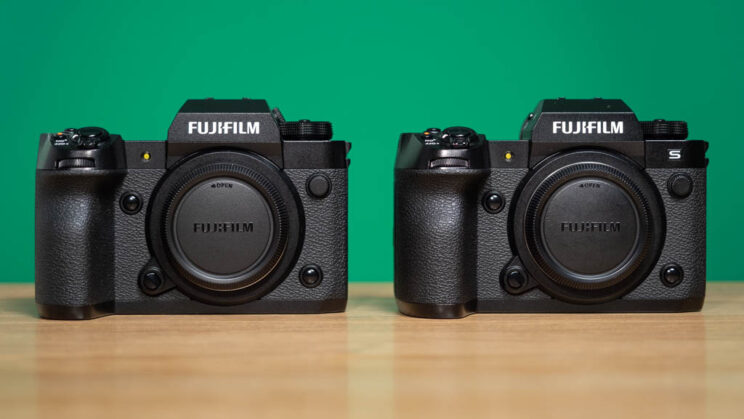
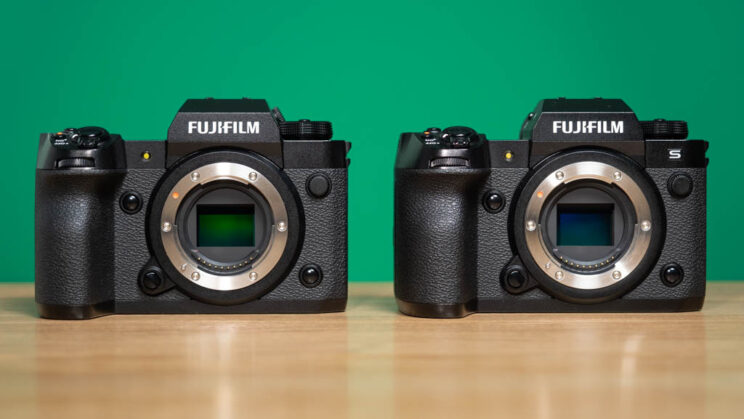
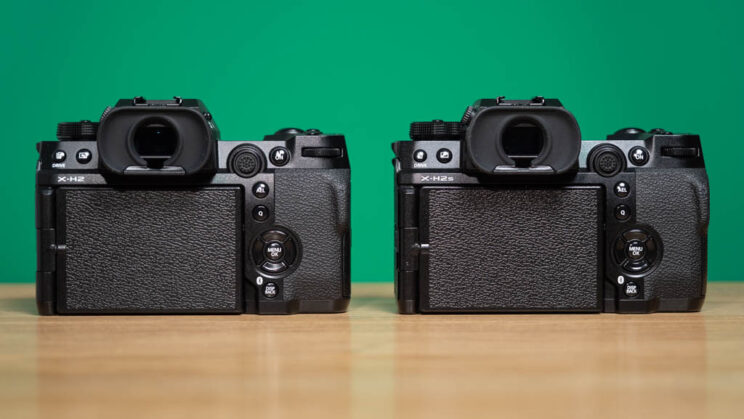
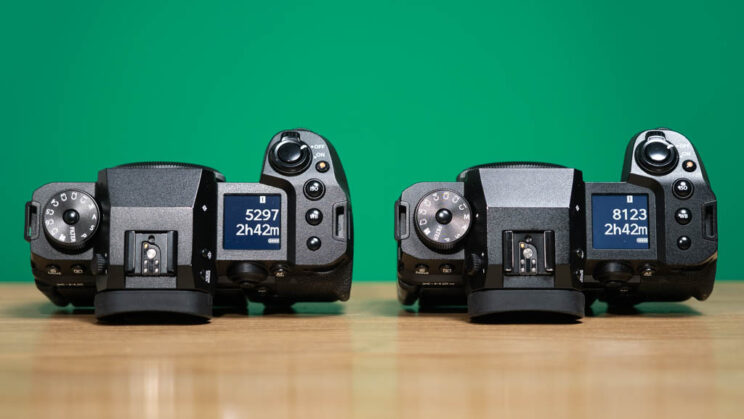
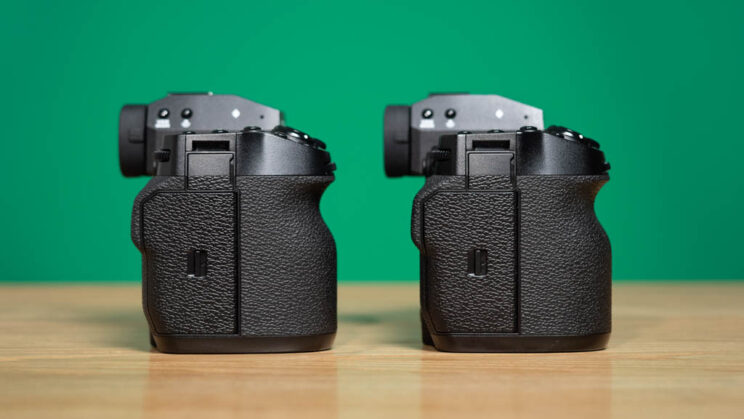
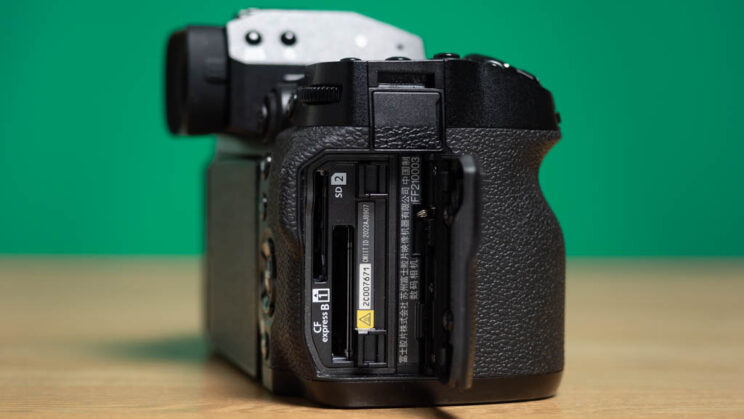
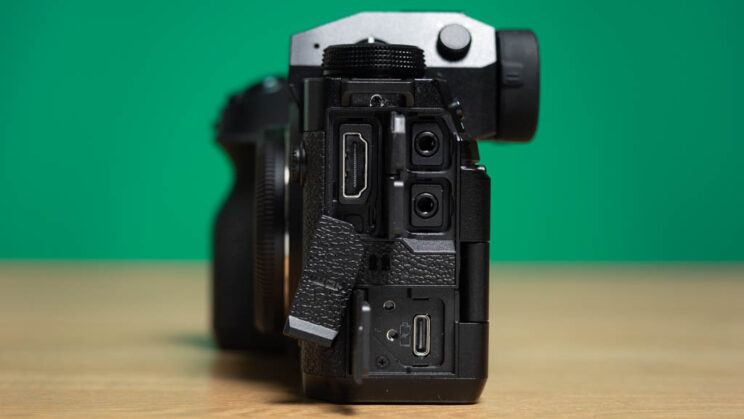
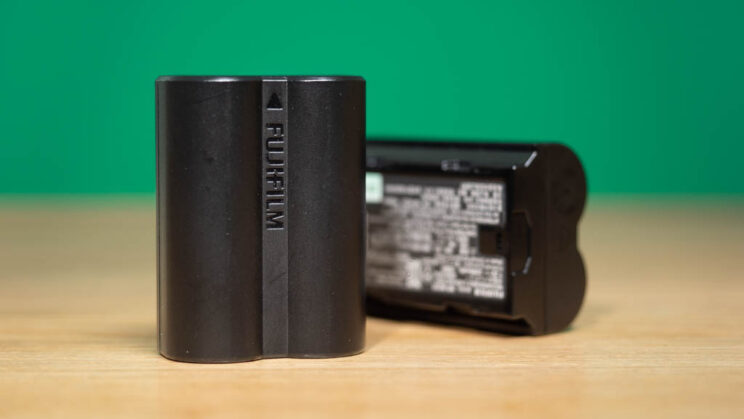
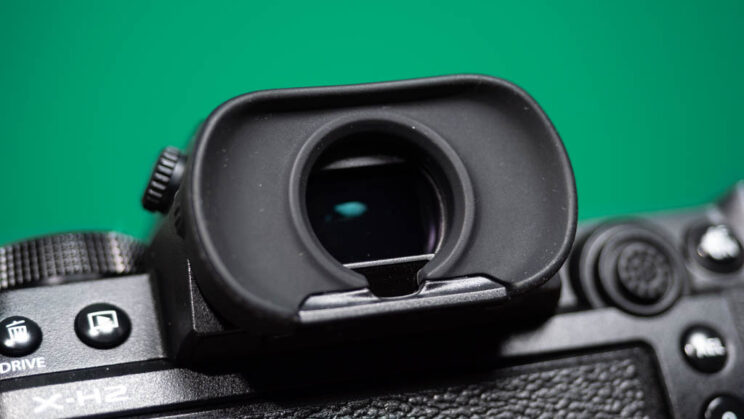

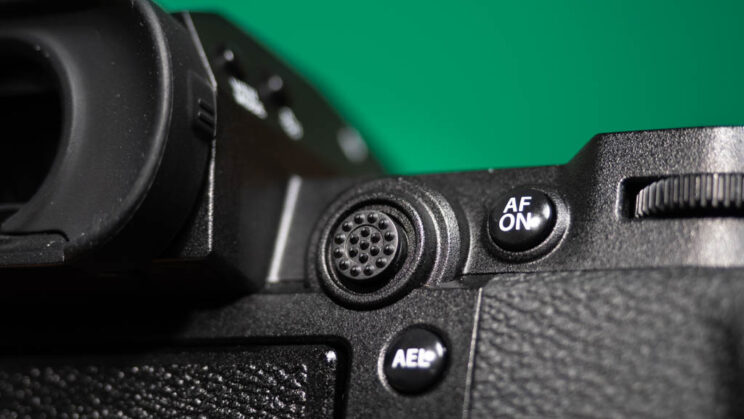
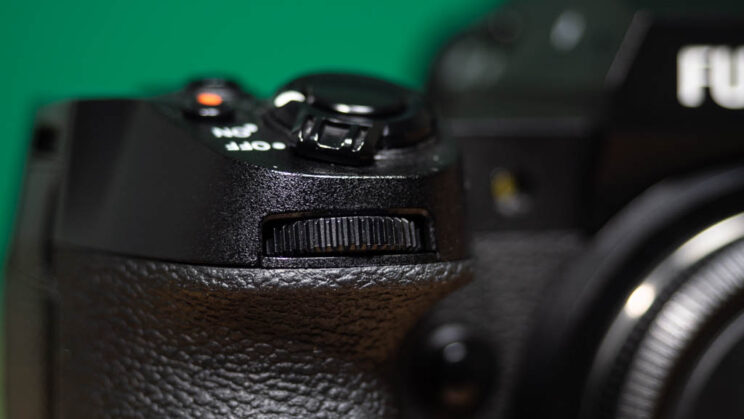
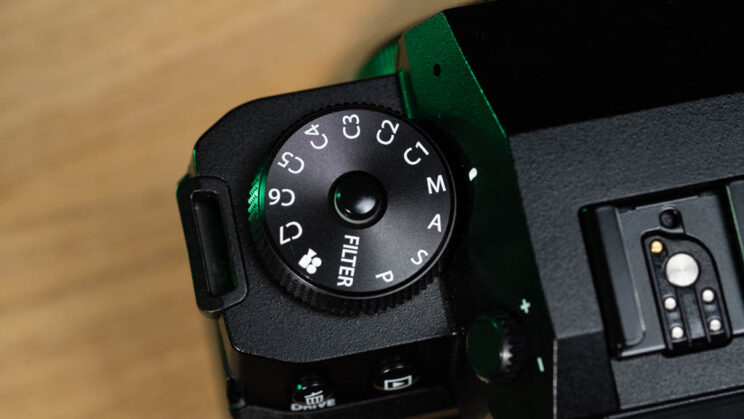
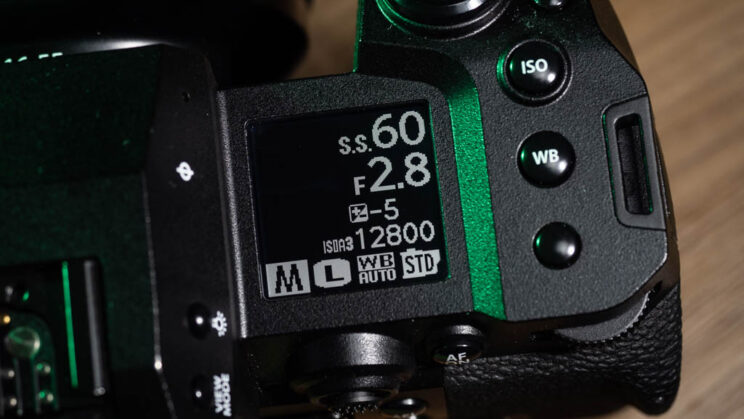
Conclusion
If you’re interested in one of these two cameras, you might wonder which one to get.
If you’re planning to capture a lot of action, like fast moving animals, for stills or video, the S model is the best one because of the minimal rolling shutter and the faster frame rate: 40fps for photos and 4K 120p for video. You can also record 6.2K, which gives you plenty of resolution when you need it, and you get less noise at high ISO for video.
On the other hand, if you are interested in extra resolution, the X-H2 has plenty to offer: not only the 40MP files, but also 8K video, which is really good. You also get the pixel shift mode that delivers a 160 megapixel file.
As for everything else, these two cameras really are identical. The ergonomics, the LCD, the viewfinder, as well as many video settings (10-bit 4:2:2 internal, no recording limitation).
The autofocus performance is pretty much the same: very good for static subjects, and subject detection, especially eye detection, is very helpful. But with fast moving birds, I didn’t find the upgrade in performance and keeper rate I was hoping to see.
Reminder: the links below are affiliate links. If you decided to buy something after clicking the link, we will receive a small commission.
Check price of the Fujifilm X-H2 on
Amazon | B&H Photo
Check price of the Fujifilm X-H2S on
Amazon | Amazon UK | B&H Photo

